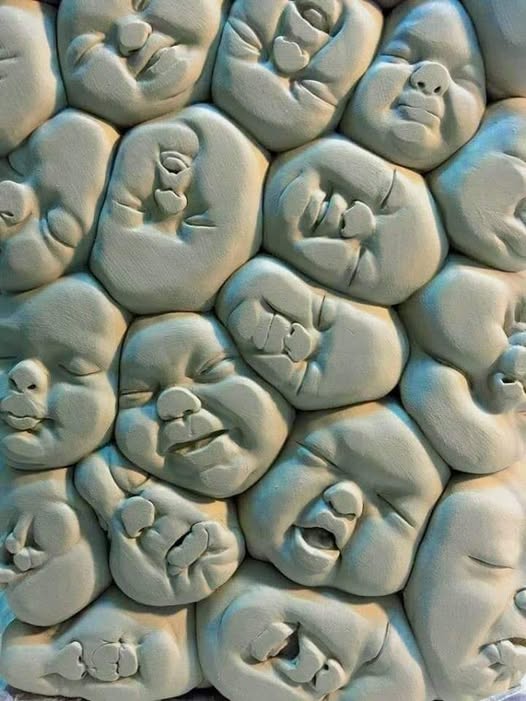Film curator, writer and academic Roisin Tapponi looks at how contemporary Arabic filmmakers use thirst to inspire their practices: Thirst is political; Thirst in economic; Thirst is cultural tradition, Thirst is social.
Roisin Tapponi at The Frieze: In the gulf, thirst is a paradigm: it is impossible to think about the desert without thinking about water. The Arabian Desert is also a peninsula, with countries formed from both deserts and ports. I propose thirst trap theory – derived from the slang for a selfie used to elicit an exchange between sexual bodies – as a way of reading this relation between desert and surrounding water, between drought and abundance, in cinema from the Gulf. Ranging from narrative cinema to experimental video, these films are as diverse – and extreme – as the landscape that inspired them.
Thirst is political

Using deep time and sweltering geological dreamscapes, Sophia Al Maria’s experimental videos The Future Was Desert I and II (both 2016) explore the political relations between nation states through the imaging of natural resources. We see sublime shots of oil, water and fire exploding across regional landscapes, taken from various scientific, colonial and geographical archives. In The Future Was Desert I, rapidly edited footage of infrared maps, purple moonscapes and ribbed sand dunes is narrated by a rhythmically disjointed, robotic-sounding voice, which relates a poetic history of human destruction, exposing the chasm between anthropological and environmental timescales. The film re-purposes these visual documents to highlight the toxic correlation in the region between politics and natural resources, particularly in relation to oil.
Shot on Oman’s rugged coastline, Scales (2019) is a feminist parable by Saudi director Shahad Ameen. The film tells the story of a village in which each family must sacrifice a daughter to the sea. She then becomes a mermaid, a mythological figure whose life is determined by those on land – a metaphor for the myths patriarchal society invents about women. One father refuses to sacrifice his daughter, Hayat, a bold young woman who fights to stay living on the land among men. Serving as an analogy for the issues around women’s emancipation in the region, this plot enables Ameen to explore political themes related to women’s rights, such as freedom and autonomy, which wouldn’t be as possible – or as interesting – to investigate explicitly. Hayat has to choose between land and sea but, in reality, she is fighting for something much bigger: the right to choose. She refuses a destiny pre-ordained by a patriarchal system, which imprisons women within a certain lifestyle, dictated by law and enforced by society, even before they are born.
Thirst Is Economic

The race to construct cityscapes across the region has led to a concerted effort to propel the growth of local film industries. This is only in very recent years, however: just a decade ago, Abu Dhabi refused permission for the crew of Sex and the City 2 (2010) to shoot there on location. Now, countries in the Gulf are doing a significant U-turn in a bid to attract the attention of Hollywood production companies. One notable exception is Qatar, where the Doha Film Institute was founded back in 2010. In Saudi Arabia, by contrast, cinema was banned until 2018; just three years later, however, location scouting services have now been launched. Film AlUla, for example, offers up AlUla as the desert backdrop catering to all Hollywood blockbuster needs. The economic extraction of landscape through film production is a less invasive form of urban development than, say, the construction of Neom – a new desert city in Saudi Arabia, complete with snowy ski-slopes – but it is still inevitably being co-opted as a key investment principle.
Ahaad Alamoudi’s NIUN (2018) explores the relationship between economic potential and accelerated futures in Saudi Arabia. The film depicts two extraterrestrial characters, one of them a Saudi woman (played by Alamoudi) and the other a white man (her collaborator, US designer Michael Mogensen). They are presented as the forefathers of a fictional civilization and, by extension, the urban developers of a desert-city utopia – presumably inspired by Neom, which was inaugurated in 2017. The film draws on the proto sci-fi text Awaj bin Anfaq by Zakariya al-Qazwini (1203–83), which is about an alien who visits Earth to study human civilization. Alamoudi’s interpretation equates human reproduction with the construction of cityscapes, envisaging both the womb and the desert as sites of creation and no return. In a light dig at the futures promised by urban planning, which never quite live up to their blueprints, the film’s vision of a futuristic home – a high-end tent – is intentionally farcical. More here.
FEATURED VIDEO
Honorary contributors to DesPardes: Ajaz Ahmed, Ammar Jafri, Anwar Abbas, Arif Mirza, Aziz Ahmed, Bawar Tawfik, Dr. Razzak Ladha, G. R. Baloch, Jamil Usman, Jawed Ahmed, Ishaq Saqi, Khalid Sharif, Masroor Ali, Md. Ahmed, Md. Najibullah, Shahbaz Ali, Shahid Nayeem, Syed Hamza Gilani



Very interesting 🤔 especially Oman coast saga.